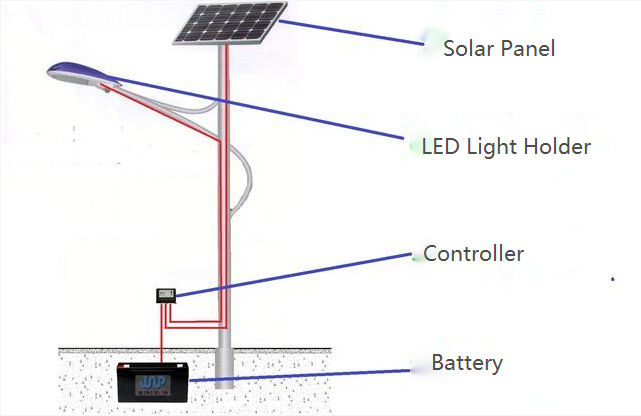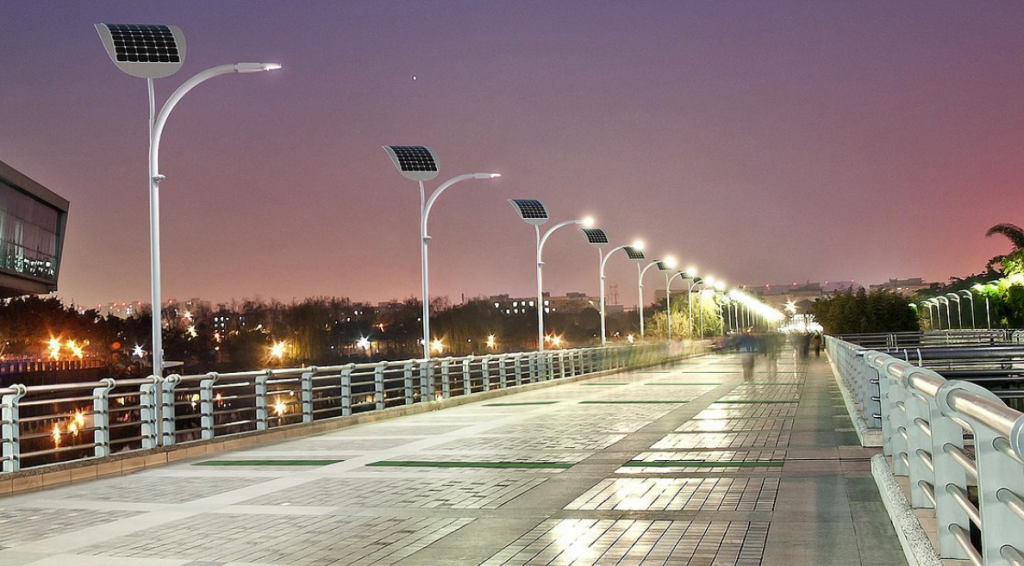Brief Introduction
In general, solar street lights do not need to set a separate switch, because the controller can better complete the task of street light switching.
The biggest advantage of solar street lights is the elimination of buried wires, which can save two large costs of digging and filling ground and cables. If the switches are set uniformly, then these two costs are the same (of course the cable can be changed to a thinner signal line). Therefore, the task of switching street lights must be completed by solar street lights themselves, otherwise the significance of solar energy will be lost.
Fortunately, the development of the single-chip microcomputer has been fully equipped with the conditions to complete this task well.
Solar street lights are generally composed of photovoltaic panels, batteries, light holders and controllers. The controller is at the center of the entire system. Today’s controllers generally have the following functions.
Switch Function
① Turn on the street lights.
Solar street lights are all light control, but do not need to install a light sensor separately. The turn-on of the street light is determined by the output voltage of the photovoltaic panel. When it gets dark and the street lights need to be turned on, the output voltage of the photovoltaic panels will also drop. When the voltage drops to a certain value (such as 5v), the microcontroller in the controller will automatically turn on the electronic switch and light up the street lights.
② Turn off the street lights.
The way to turn off the street light needs to be set in advance, which can be set as either time control or pure light control. Most timers start timing from the lighting of the street lights, and automatically turn off when the timing is over. The disadvantage of this control is the inconsistent turn-off time of the four seasons. For example, it is also set to 6 hours, and sometimes the lights will be turned off before 23:00 in winter. In summer, it can be lit until two or three o’clock in the morning at the latest.
To turn off the street lights at a fixed point, you need to configure the clock in the controller. Although this is technically difficult, such controllers are rarely seen.
Then there is the pure light control. Its light-off is based on the output voltage of the photovoltaic panel. When the sun gradually brightens, with the rise of the output voltage of the photovoltaic panels, the street lights will automatically turn off.
Other Functions
In addition to the switch function, the controller of the solar street light has many other functions.
① Select the battery function.
Because the photovoltaic panel needs to charge the battery during the day, and different batteries have different requirements for charging and discharging, such as single lead-acid battery 1.8-2.3ⅴ, lithium battery 2.8-4.2ⅴ and so on. For this reason, a variety of matching parameters are preset in the controller for users to choose.
② Street light power supply function.
Because solar street lights are mostly LED light heads, most controllers have built-in constant current power supplies.
In the past, due to the large size of the constant current power supply and a lot of heat, it was installed in the light head separately. Now with the improvement of power efficiency and the miniaturization of electronic components, the controller and street light power supply have been “integrated into one”, which greatly facilitates installation and construction.
③ Step output:
To further save power, most controllers have this feature. Because solar street lights are generally installed in branch roads or pavilions, there is no need to be too bright late at night. Therefore, the operation mode of reducing power by time period can be adopted. This does not have a significant impact on lighting performance and achieves energy savings. In addition, the discharge current lower than 0.1C can also increase the capacity of the battery.
The settings of the above functions are divided into two ways: one is through the buttons on the controller, and the other is not to set the buttons on the controller, but to input through the remote control. Judging from the current market situation, the latter are in the majority. Because this method is more suitable for batch operations, the reliability is also higher.


